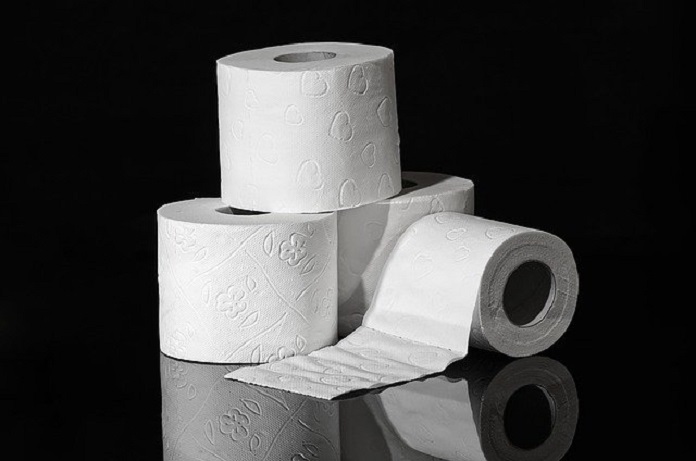Poop is usually a light to dark brown color, but its color can change due to a variety of causes.
Some reasons why poop is green include changes in diet, iron supplements, bacterial infection, or gastrointestinal disorders. Most changes in stool color do not signify a medical condition.
If it is serious, there will normally be other symptoms in addition to green stool, such as abdominal pain, nausea, and vomiting.
Diet-based reasons
Possible dietary causes to answer the question ‘Why is my poop green’ include consumption of large quantities of leafy, green vegetables – such as chlorophyll-rich spinach, kale, and broccoli – or green food coloring.
Chlorophyll is a green pigment found in the photosynthesizing parts of all green fruits and vegetables.
Bile acid
Bile pigment is a yellow-green fluid involved in the digestion of fatty acids in the small intestine.
Bile pigments are normally altered from green to brown by enzymes as they pass along the gastrointestinal (GI) tract. However, when bile acid travels through the intestines too quickly, food is not correctly broken down which leads to green diarrhea.
Excessive use of laxatives during constipation means that food passes through the intestines at a rapid pace and interferes with the digestion process. Tea, coffee, and alcohol can also act as laxatives.
Consuming these beverages or laxatives can produce stool that appears to be green in color.
Bile cannot be stored in the gallbladder following a gallbladder surgery, in which the gallbladder is removed from the body. Bile is consequently passed out with stool in large amounts, producing a green stool.
Iron supplements
Common side effects of iron supplementation are constipation and diarrhea. For this reason, iron supplements can change the color of poop to dark green. Side effects can be controlled by taking smaller amounts or lower doses of iron.
Green stool can occur during pregnancy since pregnant women are advised to take prenatal vitamins, which contain a high dose of iron.
This is considered to be normal during pregnancy except if it is accompanied by other symptoms.
Gastroenteritis
Gastroenteritis is a common condition caused by inflammation of the digestive tract.
The most common pathogens causing infectious gastroenteritis are Salmonella and Giardia. Salmonella is a common foodborne disease that causes food poisoning.
Giardiasis is an infection caused by the intestinal parasite Giardia lamblia and is developed through the consumption of contaminated water or contact with an affected individual.
Antibiotics
Excess use of antibiotics can result in inflammation of the colon (colitis). Antibiotics such as fluoroquinolones, macrolides, or cephalosporins can kill healthy bacteria in the gut, producing green diarrhea.
A course of antibiotics can also cause the death of the bacteria involved in the degradation of urobilinogen, a pigment that gives stool its characteristic brown color.
Gastrointestinal disorders
Bowel conditions, such as irritable bowel syndrome (IBS), celiac disease, inflammatory bowel disease, and colorectal cancer can cause stool of a green color to be produced.
- Irritable bowel syndrome is the most common gastrointestinal disorder worldwide and its symptoms include bloating, abdominal pain, diarrhea, and constipation.
- Celiac disease is a rare condition involving sensitivity to gluten. Common symptoms include steatorrhea (fatty stool), diarrhea, and weight loss.
- Inflammatory bowel disease comprises of Crohn’s disease (inflammation of the large intestine) and ulcerative colitis (inflammation of the lining of the large intestine).
- Severe Crohn’s disease and ulcerative colitis increase the risk of developing colorectal cancer. Symptoms of colorectal cancer include fatigue, alternating stages of constipation and diarrhea, and traces of bright red blood in the stool.
An isolated case of an abnormal stool color may not be a cause for concern. However, it requires investigation if it continues over a few days or is accompanied by additional symptoms. You should seek medical help if you are experiencing persistent stool discoloration. The doctor will have to explore the potential reasons why poop is green in order to advise diagnosis or treatment.
Written by Albina Babu, MSc
References:
Bowel movement (2020). MedlinePlus. Retrieved from: https://medlineplus.gov/bowelmovement.html#cat_92
Pareek, S., et al. (2017). Chlorophylls: chemistry and biological functions. Fruit and Vegetable Phytochemicals: Chemistry and Human Health. John Wiley & Sons, pp.269-284.
Senderovich, H. and Khani, E.G. (2018). The role of bile acid sequestrant in diarrhea management: too good to be true. J Clin Gastroenterol Hepatol, 2(3), pp.19-25.
Uyanikoglu, A., et al. (2012). Does cholecystectomy increase the esophageal alkaline reflux? Evaluation by impedance-pH technique. Journal of Neurogastroenterology and Motility, 18(2), pp.187-193.
The scoop on poop (2020). Canadian Society of Intestinal Research. Retrieved from: https://badgut.org/information-centre/a-z-digestive-topics/the-scoop-on-poop/
Taking iron supplements (2020). MedlinePlus. Retrieved from: https://medlineplus.gov/ency/article/007478.htm
Nair, A., et al. (2015). Isolation and identification of Salmonella from diarrheagenic infants and young animals, sewage waste and fresh vegetables. Veterinary World, 8(5), p.669-673.
Assessment and management of infectious gastroenteritis (2009). BPJ, 25. Retrieved from: https://bpac.org.nz/BPJ/2009/December/docs/bpj25_gastro_pages10-19.pdf
Knoop, K.A., et al. (2016). Antibiotics promote inflammation through the translocation of native commensal colonic bacteria. Gut, 65(7), pp.1100-1109.
Vahedi, H., et al. (2010). Irritable bowel syndrome: a review article. Middle East Journal of Digestive Diseases, 2(2), pp.66-77.
Murray, J.A., et al. (2004). Effect of a gluten-free diet on gastrointestinal symptoms in celiac disease. The American Journal of Clinical Nutrition, 79(4), pp.669-673.
Colorectal cancer (2020). The Royal Marsden NHS Foundation Trust. Retrieved from: https://www.royalmarsden.nhs.uk/your-care/cancer-types/gastrointestinal/lower-gastrointestinal/colorectal-cancer#
Shahnazarian, V., et al. (2018). Pepto-Bismol tablets resembling foreign bodies on abdominal imaging. Cureus, 10(1).
Image by Alexas_Fotos from Pixabay



